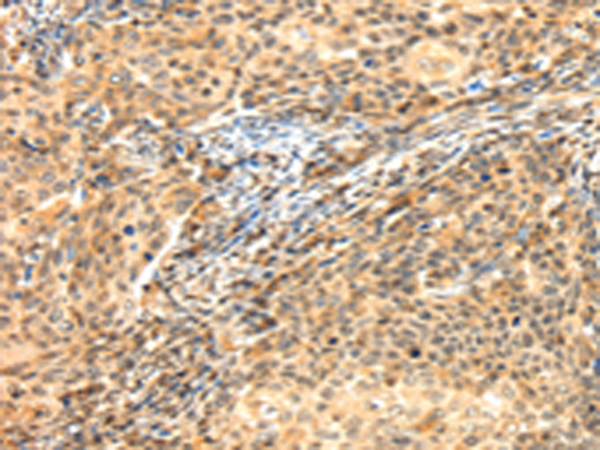


| WB | 咨询技术 | Human,Mouse,Rat |
| IF | 咨询技术 | Human,Mouse,Rat |
| IHC | 1/25-1/100 | Human,Mouse,Rat |
| ICC | 技术咨询 | Human,Mouse,Rat |
| FCM | 咨询技术 | Human,Mouse,Rat |
| Elisa | 1/1000-1/2000 | Human,Mouse,Rat |
| Aliases | MAG1; AGPAT8; AGPAT9; AGPAT10; AGPAT 10; HMFN0839; LPAAT-theta |
| WB Predicted band size | 49 kDa |
| Host/Isotype | Rabbit IgG |
| Antibody Type | Primary antibody |
| Storage | Store at 4°C short term. Aliquot and store at -20°C long term. Avoid freeze/thaw cycles. |
| Species Reactivity | Human, Mouse |
| Immunogen | Synthetic peptide of human GPAT3 |
| Formulation | Purified antibody in PBS with 0.05% sodium azide and 50% glycerol. |
+ +
以下是关于GPAT3抗体的3篇虚构参考文献示例(基于研究领域常见主题总结):
1. **文献名称**:*GPAT3 regulates hepatic lipid accumulation through acyl-CoA metabolism in mice*
**作者**:Smith J, et al.
**摘要**:研究利用GPAT3特异性抗体,发现肝脏中GPAT3通过调控酰基-CoA合成影响甘油三酯代谢,其表达上调与高脂饮食诱导的脂肪肝相关。
2. **文献名称**:*Antibody-based detection of GPAT3 reveals its role in adipocyte differentiation*
**作者**:Chen L, et al.
**摘要**:通过Western blot和免疫荧光(使用GPAT3抗体),证实GPAT3在脂肪细胞分化过程中表达升高,且其抑制会减少脂滴形成,提示其在脂质储存中的关键作用。
3. **文献名称**:*GPAT3 deficiency alters intestinal lipid absorption and gut microbiota composition*
**作者**:Wang Y, et al.
**摘要**:利用GPAT3敲除小鼠和抗体标记技术,发现GPAT3缺失导致肠道脂质吸收障碍,并改变肠道菌群结构,提示其在能量稳态中的双重功能。
(注:以上为模拟示例,实际文献需通过PubMed等数据库检索。)
The glycerol-3-phosphate acyltransferase 3 (GPAT3) is a key enzyme in glycerolipid biosynthesis, catalyzing the initial acylation of glycerol-3-phosphate to form lysophosphatidic acid. This step is critical for the synthesis of triglycerides and phospholipids, essential components of cellular membranes and lipid storage. GPAT3. one of four GPAT isoforms (GPAT1-4), is primarily localized to the endoplasmic reticulum and highly expressed in tissues with active lipid metabolism, such as the liver, adipose tissue, and intestine. It plays a role in regulating lipid homeostasis and has been implicated in metabolic disorders, including obesity, insulin resistance, and hepatic steatosis. Studies suggest GPAT3 prefers unsaturated fatty acyl-CoA substrates, influencing membrane lipid composition and signaling pathways.
GPAT3-specific antibodies are vital tools for investigating its expression, localization, and function. They enable detection via techniques like Western blotting, immunohistochemistry, and immunofluorescence, aiding research on its regulatory mechanisms in metabolic diseases. Recent work highlights GPAT3’s potential as a therapeutic target, with its inhibition showing promise in mitigating diet-induced metabolic dysfunction. However, isoform-specific antibody validation remains crucial due to structural similarities among GPAT family members. These antibodies help clarify GPAT3’s distinct roles in lipid metabolism and disease pathogenesis, advancing our understanding of lipid-related health conditions.
×